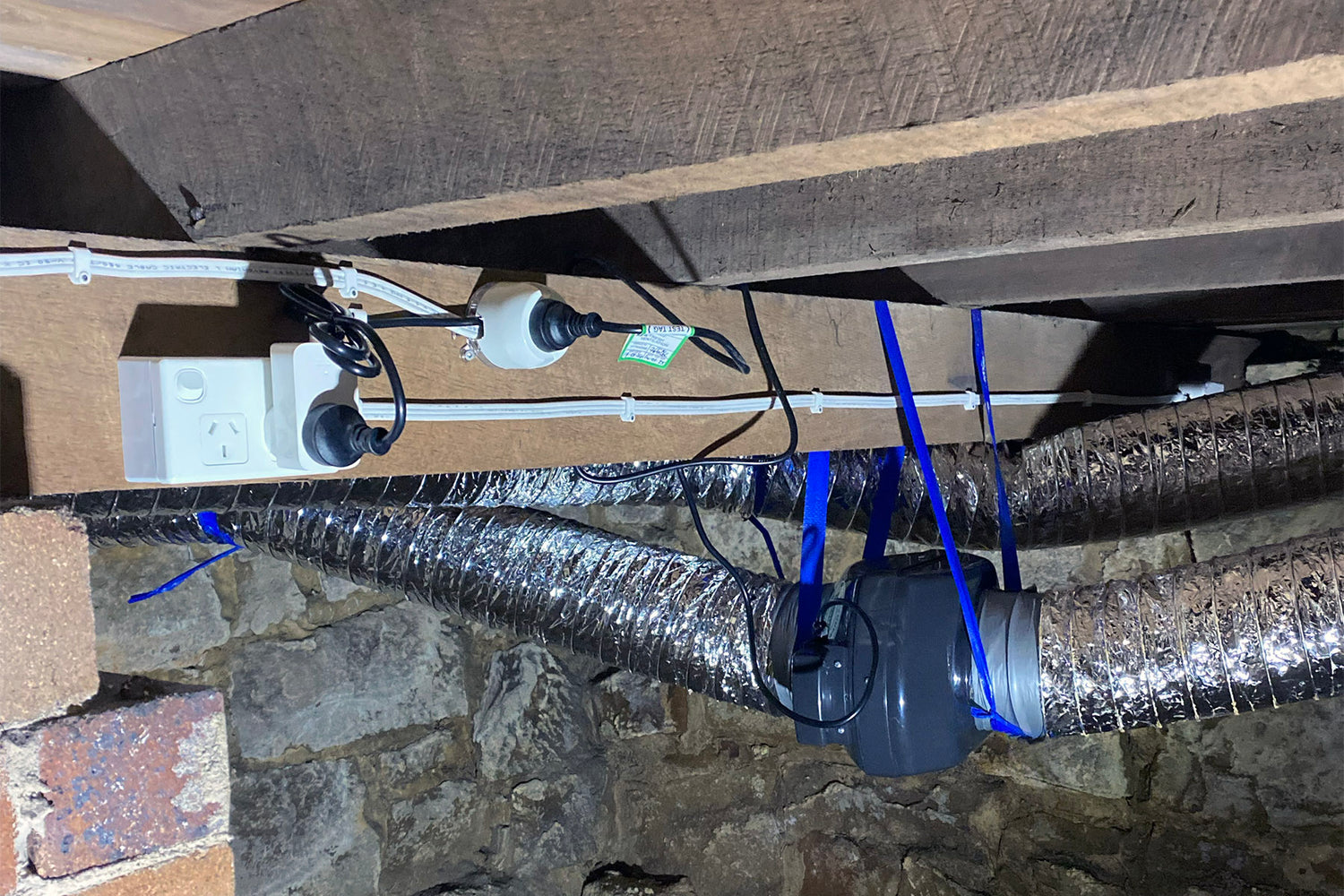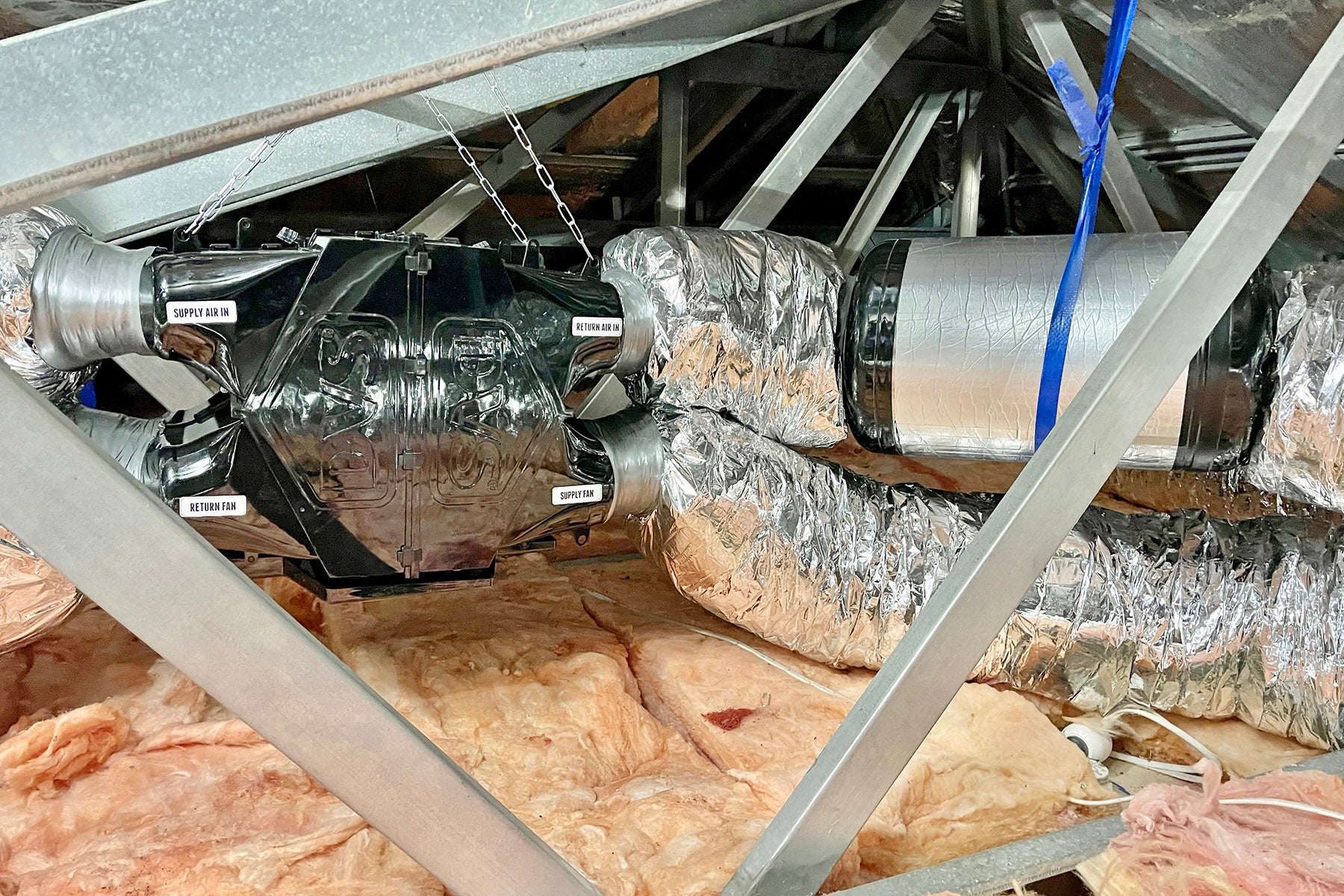In the realm of subfloor ventilation, the choice of motor plays an important role in the system's overall performance, efficiency and noise levels. At Fresh Ventilation, our exclusive centrifugal fans from ebm-papst utilise both AC and EC motors in our subfloor ventilation systems, each bringing unique benefits to the table. Here's a closer look at how these motors operate and influence the system's functionality.
AC Motors: The Reliable Workhorse
For the past decade, AC (Alternating Current) motors have been a mainstay in our subfloor ventilation systems. These single-speed motors operate at 230V and are characterised by their simplicity and robustness. Their design is straightforward, involving fewer components, which contributes to their remarkable reliability and durability, which we often describe as "bulletproof" to our customers. We've installed thousands of them over the past decade, and we've only ever had 3 fail (and all within the first month of operation).
Our centrifugal AC motors in our systems are already particularly quiet compared to 'similar' products used by other ventilation companies, making them an excellent choice for residential areas where noise levels are a concern. In a subfloor ventilation system, we typically run these motors for 10 hours a day, from 7.00am to 5.00pm. This schedule aligns with the warmest part of the day, which is most effective for subfloor ventilation. Additionally, this timing coincides with the peak hours of solar systems, ensuring that the energy consumption of our fans is covered by sustainable energy sources when available.

EC Motors: The Efficient Innovator
On the other hand, EC (Electronically Commutated) motors have been more sparingly used by us over the past decade in our subfloor ventilation systems, largely due to their increased cost and a difficult to understand technology as far as benefits are concerned. On face value, they offer higher airflow and a significantly stronger pressure curve, but they also have higher energy consumption and produce slightly more noise. However, as you'll see from the examples in the following section, this assumption is made based on running them at full speed, which is an incorrect usage of their technology.
These are variable-speed motors operating at a lower voltage of 10V. Their internal components are more complex, involving semiconductors and electronic control, which allows for speed variability and enhanced efficiency. EC motors are known for their exceptional reliability, especially when used in an adjusted scenario that leverages their variable speed feature.
One of the significant advantages of EC motors is their efficiency at reduced speeds. To summarise it in an over-simplified manner, reducing their speed by 20% typically results in a 50% drop in both energy consumption and noise. As you'll see in the following scenario, when set at 40% speed, these motors can provide almost 40% more ventilation over a 24-hour period while consuming only half the energy of their AC motor counterparts. This makes them an excellent choice for systems intended to run round-the-clock. At reduced speeds they are almost silent (and quieter than our AC motors), making them ideal for environments where noise reduction is paramount.

Case Study: A Two Fan Subfloor Ventilation System
A two fan subfloor ventilation system is easily our most installed subfloor ventilation system. We thought it was an ideal example to compare the capabilities and efficiencies of each motor, when operated in their ideal use scenarios.
We've used two formulas to compare our AC motors against our EC motors:
(1) Daily Energy Consumption (kWh) = Power Usage of Each Fan (W) × Number of Fans × Number of Hours in Operation ÷ 1000
(2) Daily Ventilation (m3/h) = Airflow of Each Fan (m3/h) × Number of Fans × Number of Hours in Operation
AC Motors at 100% Speed:
- Daily Energy Consumption (kWh) = 48W × 2 Fans × 10 Hours ÷ 1000 = 0.96kWh per Day
- Daily Ventilation (m3/h) = 540m3/h × 2 Fans × 10 Hours = 10,800m3/h per Day
EC Motors at 40% Speed:
- Daily Energy Consumption (kWh) = 10W × 2 Fans × 24 Hours ÷ 1000 = 0.48kWh per Day
- Daily Ventilation (m3/h) = 310m3/h × 2 Fans × 24 Hours = 14,880m3/h per Day
Summary
| AC Motors | EC Motors | EC Motor Benefit | |
| Speed Setting | 100% | 40% | 10dB(A) Quieter at 40% Speed |
| Daily Energy Consumption | 0.96kWh | 0.48kWh | 50% Less Energy Consumption per Day |
| Daily Ventilation | 10,800m3/h | 14,880m3/h | 38% More Airflow per Day |
| Daily Runtime | 10 Hours | 24 Hours | 140% More Runtime per Day |
Tailoring the Choice to Your Needs
The decision between AC and EC motors largely depends on the specific requirements of the subfloor ventilation system. If the aim is to run the system for a limited number of 'sunny' hours during the day, particularly when solar power can offset the energy consumption, AC motors are a superb choice. Their simplicity, reliability, and quiet operation make them a cost-effective and efficient option for standard ventilation needs.
For scenarios requiring continuous operation, EC motors stand out. Their ability to operate efficiently and silently at reduced speeds allows for significant energy savings and enhanced ventilation effectiveness over a 24-hour period. This makes them ideal for more demanding ventilation requirements, where continuous air exchange is necessary.
Conclusion
At Fresh Ventilation, we understand that each subfloor ventilation scenario is unique. By offering both AC and EC motor options, we cater to a wide range of ventilation needs, ensuring that our clients receive the most efficient, reliable, and suitable system for their specific circumstances. Whether it's the robust simplicity of an AC motor or the advanced efficiency of an EC motor, our focus remains on providing top-quality ventilation solutions tailored to each client's requirements.
Contact us today to see how we can help with subfloor ventilation. We offer both professional installation, or professional guidance with custom layout maps with our DIY kits online.




Leave a comment
All comments are moderated before being published.
This site is protected by reCAPTCHA and the Google Privacy Policy and Terms of Service apply.